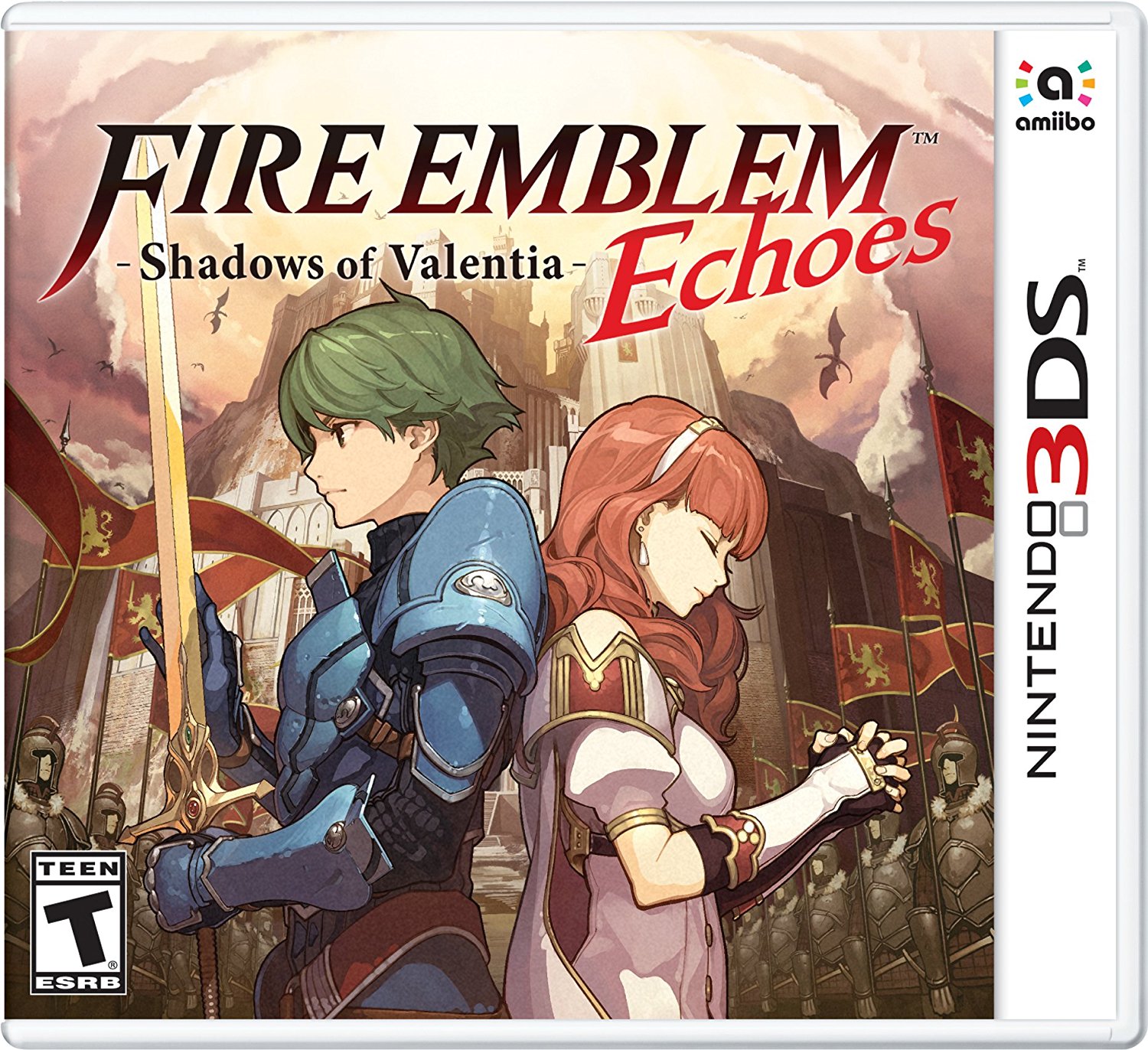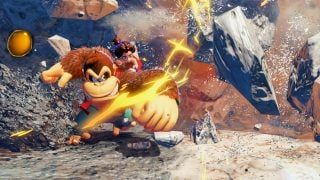There was something about the NES/Famicom area and sequels that just made things weird. Zelda, Castlevania, Final Fantasy, even Mario — all of them had immediate sequels that took bizarre steps away from what made the first great. Fire Emblem was no exception, as the series’ second entry, Fire Emblem Gaiden, was a huge departure from the first game and those that followed it, sporting mechanics that would never be seen again in the series.
That is, until now.
Surging onto the scene comes Fire Emblem Echoes: Shadows of Valentia, a remake of Gaiden that maintains all the gameplay quirks while also updating the presentation, story and balance to make for a well-crafted experience. Keeping the spirit of the original Gaiden alive while also progressing Fire Emblem as a series, Shadows of Valentia shows how to do a remake right, offering its own, unique brand of strategy goodness.
Love, loss and legacy
Shadows of Valentia greatly expands upon Gaiden’s original plot to deliver a beefed-up, well-executed narrative. The story centers around two main characters: Alm, a well-meaning village youth who’s recruited into a resistance force when his kingdom is invaded; and Celica, a priestess living on a nearby isle who journeys to discover why the blessings of the land’s guardian deity, the Earth Dragon Mila, have gone. Players swap between the two with increasing regularity, as the two tales mingle and eventually collide.

While Echoes’ narrative isn’t the most original in the series (it, for the most part, follows the “Fire Emblem Plot” that we all know and love), it manages to impress regardless, in no small part due to strong writing and character. Both Alm and Celica manage to make an impression without growing too eccentric, and despite a few pacing issues here and there (particularly around the middle of the game), the plot was overall satisfying and enjoyable, a huge improvement over Fates’ bumbling, scattered story.
Alm and Celica aren’t the only great characters, either — Shadows of Valentia sports one of the finest casts in a Fire Emblem game, once again bolstered by great writing. From energetic Mae, to placid Lukas, to haughty Clair, the relatively small cast proved full of charming and wonderful personalities. While they lacked some of the eccentricities of Awakening and Fates characters, they feel much more grounded and human in turn, and there were very few I outright disliked by the end.
What makes the characters even more lively and memorable is the stellar voice acting. Far more proficient than Awakening and Fates’ random collection of grunts and catchphrases (or, heaven forbid, the cutscenes of Path of Radiance and Radiant Dawn), nearly every line in the game is voiced, and the performances are absolutely fantastic. Breathing even more life and personality into the characters with remarkable delivery, the quality voice acting adds even greater storytelling capabilities. Kyle McCarley and Erica Lindbeck offer great performances as Alm and Celica, and the rest of the cast is filled out with quality VAs. I can only hope future entries in the series contain such quality.

This brings us to a small disappointment, however — supports. They make their return, and while those present are absolutely wonderful (once again aided by the voice acting), there are extremely few of them to obtain. The majority of characters have only one support with anybody else, while even the FEs with more conservative pools tended to have at least four or five per character. It’s not so much a tragedy as a missed opportunity, as I would have loved to see even more character interactions within such a spectacular cast.
Fortunately, there are other mechanics that offer characterizations as well. Base conversations in towns and dungeons, small quips on the battlefield, and Memory Prisms (essentially cutscenes that show past events) all contribute in fleshing everybody out. While Echoes’ story is pretty good, its more minor characters are where it really shines.
Myriad shades and sounds
If Gaiden needed an update in one area, it was presentation — the game’s Famicom stylings aren’t exactly easy on the eyes. Fortunately, Intelligent Systems rose to the task, as the game’s UI and general quality of life continues to improve beyond the already impressive levels of the other 3DS titles. FE has never been so smooth and pleasurable to experience, and the nice maroon shade that most of the text boxes sport adds a bit of flavor to the game as well.
I also have nothing but praise for the game’s new art style, courtesy of character designer Hidari. Invigorating the early ’90s art style with vivid, unsaturated colors and varied designs, it feels like a perfect fit for the fantasy setting FE thrives in. There were few designs I didn’t love, and even then none I outright hated. I absolutely want Hidari to come back for future FEs, whether they be remakes or even new entries — that’s how stellar the art is. Couple in some great environmental design and the game stuns on a visual aesthetic level.

Combat animations are also the best I’ve seen among the 3D-modeled FEs. The way actions flow from one to another between combatants is wonderful — dodging, striking and tanking each blow feels visceral and exciting. While there was the occasional kerfuffle (such as the time when one of my mages appeared to be attacking a plank of wood due to the camera angle), the little touches pay off for the most part.
Shadows of Valentia also sports an absolutely stellar soundtrack. Gaiden had one of the better collections of songs in the series, and many of them are dutifully and artfully remastered here. Some songs will end up stuck in your head for hours on end, and the entire soundtrack covers a range of tunes, from exciting to somber, melodramatic to muted. While the nifty Ablaze/Roar mixes of Awakening and Fates are gone, the soundtrack is still something to be praised. Not to mention they brought back the long-absent healing music, which is something that should be lauded long and far.
New age retro strategizing
Fire Emblem Gaiden was without a doubt one of the more bizarre entries in the series in terms of mechanics — magic costs HP, weapons are “equipped” like standard JRPGs, terrain massively boosts evade and so on. While I wasn’t initially sure how many of these wrinkles would make it over in Echoes, I was stunned to see so much of the original incorporated — and even more surprised to see how a little bit of tweaking made the strategizing great.
Echoes is very much a wholesale translation of the original Gaiden’s framework. Battles take place on a grid system, offering up the usual FE combat with hit/miss rates, critical hits and permadeath — hallmarks of the franchise. But there’s also a world map, semi-random and grindable encounters, and lots of other little rubs that make it feel more like a JRPG and less like a SRPG, though it’s still very much the latter.

The lack of certain modern conveniences does a great job of throwing FE veterans for a loop. The weapon triangle is nowhere to be found, making you rely on terrain for evasion and magic when your foes do the same. Bows have a much greater range than normal, making them much bigger threats to your squishier units near the back. And while you don’t have to worry about your weapons breaking, most equipment has some sort of drawback (usually to your speed), and with Echoes’ balance just a point or two of a stat can make a big difference.
Not all the changes were in the original Gaiden, either. The big addition is Combat Arts — skills that must be learned with certain weapons before being used. They cost a small amount of HP, but can really change the flow of battle due to their wide range of effects — from attacking from farther away, to preventing counterattacks, to a whole lot more. It encourages experimentation with weapons and the forging system (which can transmogrify certain items), adding yet more depth to an already deep system.

It can seem a tad overwhelming at times, but I found the gameplay refreshing and unique enough to stand on its own while still familiar and palatable. Small tweaks to enemy AI (which now actually have some sense of self-preservation) also call for changes in strategy, and by the end, I was very pleased by the variety and change Echoes had to offer.
There was one aspect of Gaiden that did not translate well, however: the maps. The original was notorious among fans for its crude, blocky, haphazard level design, which was retained for the sequel. Some of the wilderness areas are nothing more than a motley amalgamation of trees punctuated by a single supply tile, or maybe a river in the middle with a one-space wide drawbridge. While the rest of the game is unceasingly faithful to Gaiden’s original design to great success, I wouldn’t have minded if they changed up or added a few maps, especially since you’ll be playing quite a few of them multiple times.

Something that they did add, however, is Mila’s Turnwheel, which has to be one of the best quality-of-life features the series has boasted. The Turnwheel allows you to turn back time to a previous turn a limited number of times — three per field battle or dungeon — more, if you get cog items. It’s completely optional, allowing you to correct small strategic mistakes or rectify RNG atrocities. (We’ve all gotten critted on those 2% chances at some point.) While it would likely need some rebalancing in other FE games, I sincerely hope Mila’s Turnwheel makes a return in the future, for its convenience saved a lot of time and stress.
Dark dungeons
Besides exploring town in a first-person mode reminiscent of visual novels, a big draw of Echoes is dungeon crawling. Featuring 3D exploration, destructible objects, and many many enemies to fight, the dungeons offer another simple, yet effective, way of differentiating the game from the rest of the series, with plenty of loot to find and environs to delve into.

Each dungeon has a different design and slight aesthetic change — not every last one is some moldy cave, though the majority do take place underground. There’s an undersea shrine, a royal tomb, and even a misty forest to make your way through, each one offering light puzzle solving depending on the locale. Striking enemies on the map with your sword will give you an advantage in battle, too. There’s nothing too fancy in the dungeon mechanics, but it’s certainly not the norm, either.
Dungeons are also important for housing Mila statues — the only place you can promote your units. In true FE fashion, your characters can promote into a higher class when they reach a certain level, and Echoes features a few more interesting classes than typical. There are your standard knights, mages, archers and so on… but also sword and magic wielding priestesses, super mobile Gold Knights or my personal favorite: the fast, strong and durable Dread Fighter, who zips around like some sort of Buddhist ninja as he tears apart enemies one by one.

Amiibo functionality
Shadows of Valentia also offers up some nifty amiibo support. Anytime in battle, you can use up Alm’s or Celica’s turn (and ten HP) to summon a Fire Emblem amiibo character. You can use the Alm or Celica amiibo to copy their stats to the figure, or any other Fire Emblem amiibo (Marth, Ike, Robin, Lucina, Roy or the upcoming Corrin) to summon a ready made phantasm fighter. While useful, the mechanic isn’t broken, as it both has a notable HP cost, lasts only a turn, and uses the action of what is likely to be one of your army’s stronger characters. It’s a neat implementation, being both a little more useful than Fates’ characters and feeling a little less essential (for those who don’t like amiibo and don’t want to feel as if they’re needed).
The Alm and Celica amiibo each also unlock a special dungeon. While a rather straightforward series of battles with some nasty stat escalation, you will get some interesting story tidbits if you persist in them, which is a nice bonus. Overall, I found the amiibo implementation to be about as good as it could be — undoubtedly useful and beneficial, but far from needed to derive full enjoyment from the game.

A tale that echoes through time
Shadows of Valentia is a remake done right. The aesthetics are charming, the characters are lovable, and everything that made the original stand out is retained. Rather than mess with the base too much, Intelligent Systems stayed wholly faithful to the core of Gaiden — and with a few minor exceptions, it paid off. It was a joy from start to finish, and I found myself satisfied by almost every aspect along the way.
Not every game as strange and different as Gaiden gets a shot at a remake. But Intelligent Systems has now proven that such games are not only worthy of another shot, they deserve as such. It seems inevitable that other Fire Emblem games will receive remakes due to not appearing in the West and having some archaic presentation, and I can only hope that these remakes receive the same love and attention that Shadows of Valentia did.
Leave a Comment
System: Nintendo 3DS
Release Date: May 19th
Categories: Role-Playing, Strategy, Adventure
Publisher: Nintendo
Developer: Intelligent Systems


